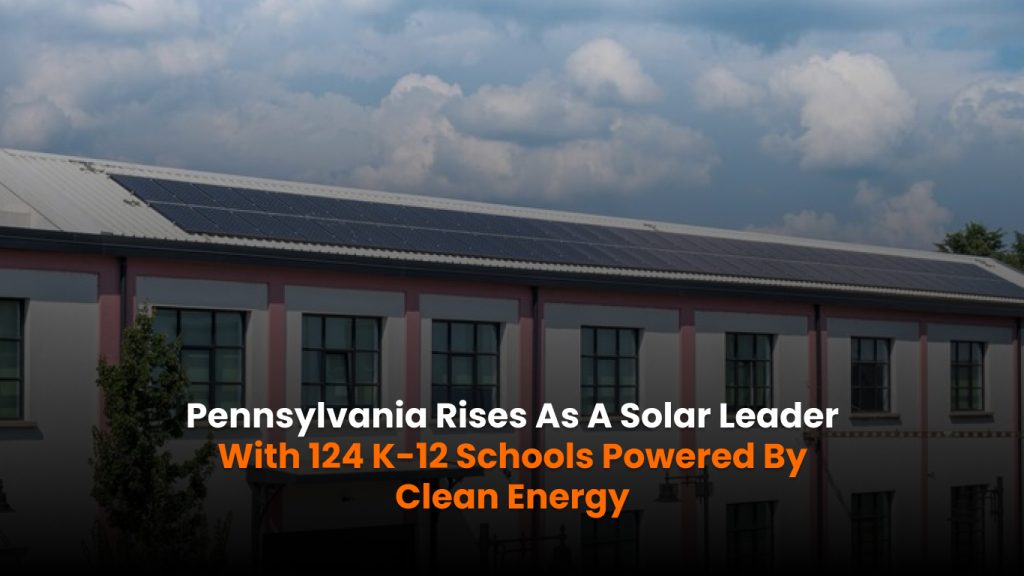Pennsylvania is quickly becoming a national leader in clean energy adoption within the education sector. The state now ranks among the top 10 in the United States for solar capacity at K-12 schools, according to a newly released report from Generation180, a nonprofit organization focused on advancing clean energy.
The report, titled Powering a Brighter Future in Pennsylvania, reveals that over the past decade, Pennsylvania’s K-12 schools have increased their installed solar capacity from 14 megawatts (MW) in 2014 to 45 MW in 2024. During the same time period, the number of schools with solar installations nearly doubled, rising from 63 to 124, says Solar Power World.
This growth is being fueled by a combination of local initiative and supportive legislation. In 2023, the Pennsylvania legislature passed the Solar for Schools Act, which created new opportunities for public schools to access the financial and educational benefits of solar energy. As a result, on June 11, the Pennsylvania Department of Community & Economic Development (DCED) announced $22.6 million in funding through the Solar for Schools Grant Program. The grants were awarded to 73 schools and are expected to help fund approximately 42 MW of new solar capacity.
Once operational, these solar projects are projected to save Pennsylvania schools nearly $5 million annually in energy costs. The resulting savings could be reinvested in classroom learning, student services and essential school programs.
The grant awards range from $42,000 to $500,000 and may cover up to 50 percent of total project costs. Schools can also combine this funding with federal solar incentives through Elective Pay, a policy tool that allows tax-exempt entities to directly receive energy tax credits. With state and federal incentives combined, some schools could recover between 60 and 100 percent of the total solar project cost.
“Pennsylvania’s schools are stepping up as clean energy leaders, not only cutting energy costs but also creating healthier learning environments and hands-on STEM opportunities for students,” said Shannon Crooker, Pennsylvania director at Generation180. “With new support from the Solar for Schools Grant Program and growing momentum across the state, we’re just beginning to tap into the full potential of solar to power our schools and our future.”
The report also highlights notable progress in rural areas. Since 2010, solar adoption in Pennsylvania’s rural school districts has doubled approximately every five years. While early installations were concentrated in southeastern urban and suburban communities, solar growth has expanded into rural counties such as Snyder, Perry and Forest.
Despite the progress, only 2 percent of Pennsylvania’s more than 6,000 K-12 schools have installed solar projects, suggesting substantial room for continued growth.
One district leading the way is Huntingdon Area School District (HASD), which became the first in Pennsylvania to complete a solar project eligible for the federal Investment Tax Credit using Elective Pay. Two of its three planned projects are already up and running. The district expects to receive over $1 million in federal support, covering roughly 37 percent of its total solar investment.
“Investing in solar is a win-win for our district. It strengthens our financial future while teaching our students the value of sustainability,” said Jennifer Mitchell, Superintendent of Huntingdon Area School District. “By leveraging Elective Pay, we’re able to tap into federal resources that made this project possible and redirect the savings back into the classroom where they’re needed most.”
The Powering a Brighter Future in Pennsylvania report is the third in a state-focused series from Generation180, following its national biennial study on solar trends in K-12 education. As solar adoption accelerates in Pennsylvania schools, the state is positioning itself as a model for how clean energy can benefit both students and communities across the country.




